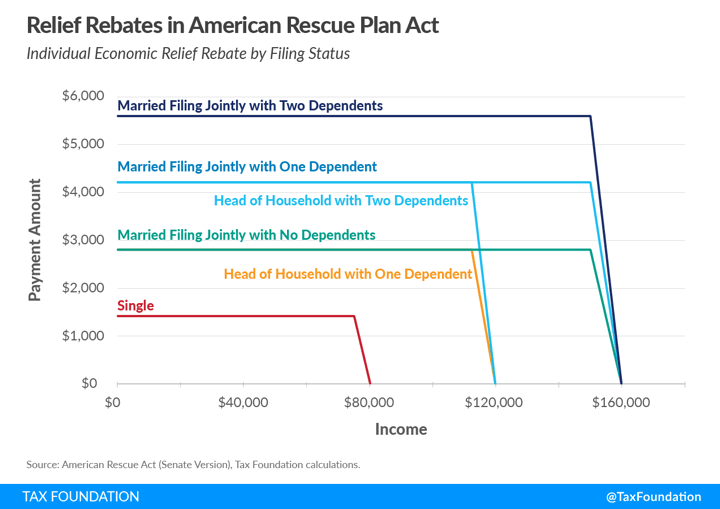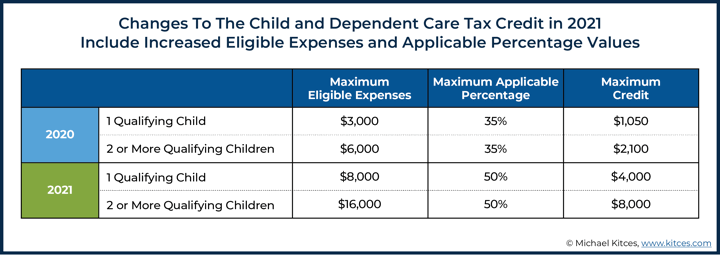 The American Rescue Plan Act of 2021 became effective March 11th, 2021 and there is a lot to unpack in the $1.9 trillion economic stimulus bill. Besides the headline $1,400 stimulus checks, there are many other items that could be worth over a thousand dollars each – expanded child and childcare tax credits, subsidized ACA/COBRA health insurance premiums, and increased pre-tax contributions to Dependent Care FSAs. After reading the NY Times, Tax Foundation, Wikipedia, and Kitces round-ups, here again are my minimalist highlights so that you can research further if it applies to your situation.
The American Rescue Plan Act of 2021 became effective March 11th, 2021 and there is a lot to unpack in the $1.9 trillion economic stimulus bill. Besides the headline $1,400 stimulus checks, there are many other items that could be worth over a thousand dollars each – expanded child and childcare tax credits, subsidized ACA/COBRA health insurance premiums, and increased pre-tax contributions to Dependent Care FSAs. After reading the NY Times, Tax Foundation, Wikipedia, and Kitces round-ups, here again are my minimalist highlights so that you can research further if it applies to your situation.

3rd Stimulus checks / Recovery rebates.
- $1,400 for each eligible recipient. This includes $1,400 for each child and adult dependent, including college students claimed as dependents.
- Income phase-out starts at AGI of $75,000 Single, $112,500 Head of Household, and $150,000 Married Filing Joint. Fully phased out at $80k/120k/160k. Qualify using your 2019 or 2020 income (once filed), or even 2021.
- Track status at IRS Get My Payment tool.
Unemployment benefits.
- Previous changes extended (including expanded eligibility) for additional 25 weeks, until 9/6. $300 weekly supplement also extended until 9/6.
- For 2020, the first $10,200 of UI benefits are now tax-free if your income is under $150,000.
Expanded Child Tax Credit.
- For 2021, it increases to up to $3,000 per child ($3,600 for ages 5 and under). The age limit for qualifying children also rises to 17, from 16. Previously, the max credit was $2,000 per child (and was only $1,000 as recently as 2017).
- Now fully refundable.
- Income phase-outs start at MAGI of $150,000 for married filing joint ($75,000 single).
Expanded Child and Dependent Care Tax Credit.
- For 2021, now worth up to $4,000 for one qualifying individual or $8,000 for two or more. More expenses are eligible, at a higher percentage. The net increase in value could be worth up to $5,900 (see chart below).
- Now fully refundable.
- Qualifying children are under the age of 13 for the entire year.

Dependent Care Flexible Spending Accounts.
- For 2021, you can now contribute $10,500 (married filing joint) into a Dependent Care FSA instead of the normal $5,000 (married filing joint). Single filers can contribute up to $5,250, up from $2,500.
- Employers must choose to allow this option. Bug your HR department and hopefully they’ll make the change before it’s too late.
Student loans.
- For student loan debt forgiven between 1/1/2021 and 12/31/2025, the forgiven amount will no longer be considered as taxable income.
- No actual student loan debt is being forgiven as part of this bill, but it may be wise to prepare for the possibility in the near future. (I might not consider paying down any student loan amounts under $10,000, especially while they are in deferral.)
COBRA Health Insurance.
- If you lost your job involuntarily (or had job hours cut and thus lost coverage), the government will pay for your entire COBRA health insurance premium from 4/1 through 9/30. This could add up to several thousand dollars.
Health insurance bought from ACA exchanges.
- Subsidies are increased.
- Use this updated Kaiser subsidy calculator.
There will always be debate about details of this bill, but that is theoretical while my goal is to be actionable. The goal here is to help taxpayers be proactive and make sure they get any benefits and aid for which they qualify.
 The Best Credit Card Bonus Offers – 2025
The Best Credit Card Bonus Offers – 2025 Big List of Free Stocks from Brokerage Apps
Big List of Free Stocks from Brokerage Apps Best Interest Rates on Cash - 2025
Best Interest Rates on Cash - 2025 Free Credit Scores x 3 + Free Credit Monitoring
Free Credit Scores x 3 + Free Credit Monitoring Best No Fee 0% APR Balance Transfer Offers
Best No Fee 0% APR Balance Transfer Offers Little-Known Cellular Data Plans That Can Save Big Money
Little-Known Cellular Data Plans That Can Save Big Money How To Haggle Your Cable or Direct TV Bill
How To Haggle Your Cable or Direct TV Bill Big List of Free Consumer Data Reports (Credit, Rent, Work)
Big List of Free Consumer Data Reports (Credit, Rent, Work)
Thanks for the info and details about this. I was wondering about the $1400 3rd Stimulus checks / Recovery rebates – does the income phase-out that starts at $75000 AGI for single technically apply to your 2021 AGI?
I realize that 2021 AGI is typically not determined until 2022 when taxes for this year are filed, but I have learned that last year’s March CARES Act actually uses 2020 incomes even though the IRS used incomes from the 2019 and 2018 returns, whatever was the latest year on record.
I believe the answer to your question is yes. However, as with the CARES act and 2020 income qualification, the key point is that if you got the stimulus based on your previous 2018/2019 income and your 2020 income ends up too high, you don’t have to pay back the stimulus. It’s yours.
So yes someone might finally qualify for this 3rd stimulus using their 2021 income, but they most likely will qualify first (and get their money sooner) with 2019 or 2020 income. You just need to qualify once, by one of the options given to you. That’s why I worded my sentence that way. 🙂
Thanks Jonathan, I appreciate the quick response. Yes, as I understand it, for last years CARES Act, it technically is based on 2020’s income but you are not required to pay it back. I was asking because it’s possible that someone’s income in 2019 and 2020 was too high to qualify for any payment from this 3rd payment, but if that person’s income this year in 2021 went down drastically then I guess they should be able to claim it next year.
Yup, it should pop up on your 2021 tax return when filing in 2022 if you are eligible and didn’t get it before.
The “Expanded Child Tax Credit” is for year 2021, not year 2020, correct?
Yes, 2021.
Can you share where this information is available? I still see the $5,000 everywhere I look. :
Dependent Care Flexible Spending Accounts: For 2021, you can now contribute $10,500 into a Dependent Care FSA instead of the normal $5,000.
Amanda,
I think the actual wording is that the 10,500 is the increased exclusion limit. So up to 10,500 dependent care expenses are tax exempt. It doesn’t increase the contribution limit. Basically use if you have prior unused FSA or something… Pretty useless.
Here is a CNBC article with additional details. Reads as an increase to the contribution limit to me. Separately, unlimited carryovers from 2020 are also now allowed (again employer must opt in).
I don’t know how long it will take for employers to allow the change, I haven’t heard anything on our DCFSA yet.
Thanks Jonathan! I am one the many that were laid off. I understand there is some coverage for internet service for the unemployed but cannot find anything on this and how you would sign up. Have you heard anything on it?
did just find this article from consumer reports https://www.consumerreports.org/broadband/emergency-broadband-benefit-program-internet-service-and-equipment-discounts/
Good info thanks
Thanks for the great information sir.
Thanks, Jonathan – appreciate you sharing details of this historic bill. I was not aware that folks could apply for help with COBRA premiums if their hours were reduced or they were let go.